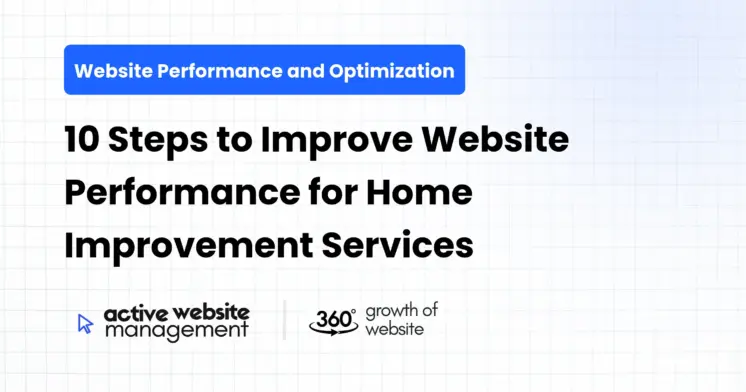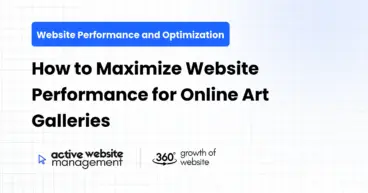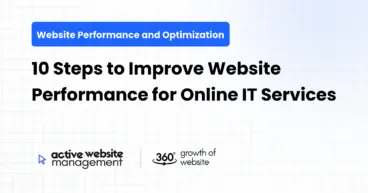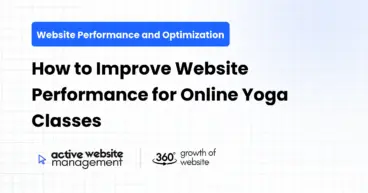February 12, 2025
16 min read
Slow website dragging down your home improvement business? Tired of potential customers clicking away before they even see your amazing work? You’re not alone. In today’s digital world, a blazing-fast website is non-negotiable, especially for home improvement services. Think about it: someone needs a leaky faucet fixed now. Are they going to wait for your website to load, or are they going to click on the next, faster option? Exactly.
This comprehensive guide will walk you through 10 actionable steps to dramatically improve your website performance, turning those frustrating slow load times into happy, converting customers. We’re talking less bounce rate, higher search engine rankings, and ultimately, more business for your home improvement service.
1. Nail Your Website Hosting: The Foundation for Speed
Think of your website hosting as the foundation of your house. A shaky foundation means cracks in the walls and a generally unstable structure. Similarly, cheap or inadequate hosting will cripple your website’s speed and reliability, no matter how beautiful your design.
What is Web Hosting, Anyway? Web hosting is where your website files live on the internet. It’s a server that stores all your images, text, and code, and serves it up to visitors when they type in your website address.
Why Cheap Hosting is a Bad Idea: Free or extremely cheap hosting options often cut corners, leading to slow servers, limited resources, and frequent downtime. This translates to a sluggish website experience for your potential customers. Imagine them waiting… and waiting… for a page to load while their toilet overflows. Not a great first impression, right?
Choosing the Right Hosting Type for Home Improvement Services:
- Shared Hosting: This is the most basic and affordable option. You share server resources with other websites. It’s suitable for very small, low-traffic websites but quickly becomes a bottleneck as your business grows.
- VPS (Virtual Private Server) Hosting: A step up from shared hosting, a VPS provides you with dedicated resources on a server. It’s like having your own apartment in a building – you share the building, but your apartment is yours. This offers better performance and control.
- Dedicated Hosting: The Cadillac of hosting options! You get an entire server all to yourself. This provides maximum performance, control, and security, ideal for high-traffic websites or those with specific security needs.
- Managed WordPress Hosting: A specialized type of hosting optimized specifically for WordPress websites. It often includes features like automatic updates, security scans, and performance enhancements. This is a great option if your website is built on WordPress, which is a popular and highly customizable platform.
Key Hosting Features to Look For:
- SSD Storage: Solid State Drives (SSDs) are significantly faster than traditional Hard Disk Drives (HDDs). Make sure your hosting provider uses SSDs for faster data access.
- Sufficient Bandwidth: Bandwidth is the amount of data that can be transferred between your website and visitors. Choose a plan with enough bandwidth to handle your website traffic, especially during peak seasons.
- Uptime Guarantee: Look for a hosting provider with a high uptime guarantee (ideally 99.9% or higher). This ensures your website is available to visitors as much as possible.
- Server Location: Choose a server location that is geographically close to your target audience. For example, if you primarily serve clients in California, choose a server located in the US West Coast.
- Customer Support: Reliable and responsive customer support is crucial in case you run into any technical issues.
Benefit: A reliable and fast hosting provider is the bedrock of your website’s performance. It ensures your website is accessible, responsive, and ready to convert visitors into customers. This is the first critical step in your renovation optimization strategy for your online presence.
2. Optimize Images: A Picture is Worth a Thousand Bytes (Less!)
High-quality images are essential for showcasing your stunning home improvement projects. However, large image files can significantly slow down your website. The key is to strike a balance between visual appeal and optimized file size.
Why Image Optimization Matters: Large image files take longer to download, leading to slow page load times. This frustrates visitors and can negatively impact your search engine rankings.
Image Optimization Techniques:
- Choose the Right File Format:
- JPEG: Best for photographs and images with complex colors. JPEG files are lossy, meaning they can be compressed to reduce file size, but some image quality may be lost.
- PNG: Best for graphics, logos, and images with transparent backgrounds. PNG files are lossless, meaning they retain image quality even when compressed, but they generally have larger file sizes than JPEGs.
- WebP: A modern image format developed by Google that offers superior compression and image quality compared to JPEGs and PNGs. WebP is supported by most modern browsers.
- Resize Images Appropriately: Don’t upload images that are larger than necessary. Resize images to the dimensions they will be displayed on your website. For example, if an image will be displayed at 800×600 pixels, don’t upload a 2000×1500 pixel image.
- Compress Images: Use image compression tools to reduce file size without sacrificing too much image quality. There are many free and paid tools available online, such as TinyPNG, ImageOptim, and Compressor.io.
- Use Lazy Loading: Lazy loading delays the loading of images until they are visible in the user’s viewport. This improves initial page load time, as only the images that are immediately visible are loaded first.
Tools for Image Optimization:
- Online Image Compressors: TinyPNG, Compressor.io, ImageOptim.
- WordPress Plugins: Smush, EWWW Image Optimizer, ShortPixel.
- Image Editing Software: Adobe Photoshop, GIMP.
Example: Let’s say you have a stunning before-and-after photo of a kitchen remodel. The original image file is 5MB. By resizing it to the appropriate dimensions and compressing it using TinyPNG, you can reduce the file size to 500KB or less, without significantly impacting the visual quality. This seemingly small change can have a significant impact on your website’s loading speed.
Benefit: Optimized images improve page load times, enhance user experience, and boost your search engine rankings. Show off your work without slowing down your website!
3. Leverage Browser Caching: Speed Up Return Visits
Browser caching is a technique that allows web browsers to store static files (such as images, CSS, and JavaScript) locally on a user’s computer. When the user revisits your website, the browser can retrieve these files from its local cache instead of downloading them from the server again.
How Browser Caching Works: When a user visits your website for the first time, the browser downloads all the necessary files to display the page. With browser caching enabled, the browser stores these files in its cache. The next time the user visits your website, the browser checks its cache for these files. If the files are found in the cache and are still valid, the browser retrieves them from the cache instead of downloading them from the server. This significantly reduces page load time for returning visitors.
Setting Up Browser Caching:
-
Using .htaccess (for Apache servers): Add the following code to your .htaccess file:
<IfModule mod_expires.c>
ExpiresActive On
ExpiresDefault "access plus 1 month"
ExpiresByType image/jpg "access plus 1 year"
ExpiresByType image/jpeg "access plus 1 year"
ExpiresByType image/png "access plus 1 year"
ExpiresByType image/gif "access plus 1 year"
ExpiresByType text/css "access plus 1 month"
ExpiresByType application/javascript "access plus 1 month"
ExpiresByType application/x-javascript "access plus 1 month"
</IfModule>
This code tells the browser to cache images for one year and CSS and JavaScript files for one month.
- Using WordPress Plugins: Many WordPress plugins can help you set up browser caching easily, such as W3 Total Cache and WP Super Cache.
Benefits of Browser Caching:
- Faster Page Load Times: Reduces page load times for returning visitors.
- Reduced Server Load: Decreases the load on your server, as the browser doesn’t need to download files repeatedly.
- Improved User Experience: Provides a smoother and faster browsing experience for your visitors.
Benefit: Browser caching drastically improves the experience for returning visitors, making your website feel lightning-fast and encouraging repeat business.
Don’t Just Maintain Your Website—
Grow It using Active Website Management! Don't Wait for Growth—Accelerate It with Active Website Management
4. Minify CSS, JavaScript, and HTML: Streamline Your Code
Minification is the process of removing unnecessary characters (such as whitespace, comments, and line breaks) from your CSS, JavaScript, and HTML code. This reduces the file size of these files, leading to faster download times and improved website performance.
Example: Imagine your website’s CSS file is 100KB with comments and extra spaces. After minification, the file size could be reduced to 70KB or less, resulting in a faster download time.
Benefit: Minifying your code is a simple yet effective way to shave precious seconds off your website’s loading time, making a noticeable difference to your user experience.
5. Implement a Content Delivery Network (CDN): Global Reach, Local Speed
A Content Delivery Network (CDN) is a network of servers located around the world that store copies of your website’s static files (such as images, CSS, and JavaScript). When a user visits your website, the CDN serves these files from the server that is closest to the user’s location.
How CDNs Work: When a user visits your website, the CDN intelligently routes the request to the server that is geographically closest to the user. This reduces the distance that data needs to travel, resulting in faster download times.
Benefits of Using a CDN:
- Faster Page Load Times: Delivers content to users from the server closest to their location, resulting in faster page load times.
- Reduced Server Load: Offloads the delivery of static files from your server, reducing its load and improving its performance.
- Improved Website Availability: Distributes your website content across multiple servers, making it more resilient to outages and traffic spikes.
- Enhanced Security: Provides protection against DDoS attacks and other security threats.
Popular CDN Providers:
- Cloudflare: A popular CDN provider that offers a free plan and paid plans with advanced features.
- Amazon CloudFront: A CDN service offered by Amazon Web Services.
- Akamai: A leading CDN provider that offers a wide range of features and services.
- KeyCDN: A cost-effective CDN provider that is easy to use.
Example: If a potential customer in London visits your website, the CDN will serve the static files from a server located in Europe, rather than from your server in the United States. This significantly reduces the latency and improves the page load time for the user in London.
Benefit: A CDN ensures that your website loads quickly for visitors from all over the world, providing a consistent and fast experience regardless of their location. This is especially important if you serve clients in multiple geographic regions.
6. Optimize Your Website’s Database: Keep Things Running Smoothly
If your website uses a database (which is almost always the case, especially with WordPress), it’s essential to keep it optimized. Over time, your database can become bloated with unnecessary data, such as revisions, spam comments, and orphaned data. This can slow down your website’s performance.
Why Database Optimization Matters: A bloated database can slow down your website’s queries, leading to slower page load times.
Database Optimization Techniques:
- Delete Unnecessary Data: Delete old revisions, spam comments, and orphaned data from your database.
- Optimize Database Tables: Optimize your database tables to improve query performance.
- Repair Corrupted Tables: Repair any corrupted database tables.
- Limit Post Revisions: Limit the number of post revisions that are stored in your database.
Tools for Database Optimization:
- WordPress Plugins: WP-Optimize, Advanced Database Cleaner, WP Sweep.
- phpMyAdmin: A popular database management tool that allows you to manually optimize and repair your database.
Example: Over time, your WordPress website can accumulate hundreds of post revisions. Deleting these unnecessary revisions can significantly reduce the size of your database and improve its performance.
Benefit: A well-optimized database ensures that your website runs smoothly and efficiently, providing a faster and more responsive experience for your visitors.
7. Choose a Lightweight Theme or Framework: Less is More
Your website’s theme or framework plays a significant role in its performance. A bloated or poorly coded theme can significantly slow down your website, even if you’ve optimized everything else.
Why Theme Choice Matters: Some themes are packed with unnecessary features, plugins, and code that can slow down your website.
Choosing a Lightweight Theme:
- Look for Themes with Minimal Features: Choose a theme that only includes the features you need. Avoid themes that are packed with unnecessary bells and whistles.
- Check the Theme’s Code Quality: Look for themes that are well-coded and optimized for performance.
- Read Reviews: Read reviews from other users to see what they say about the theme’s performance.
- Test the Theme’s Speed: Use a website speed testing tool to test the theme’s speed before you install it.
Popular Lightweight Themes:
- Astra: A popular and highly customizable theme that is known for its speed and performance.
- GeneratePress: A lightweight and versatile theme that is designed for speed and performance.
- OceanWP: A flexible and feature-rich theme that is optimized for speed and performance.
Benefit: A lightweight theme ensures that your website loads quickly and efficiently, providing a better user experience and improving your search engine rankings.
8. Minimize HTTP Requests: Reduce the Chatter
Every element on your website (images, CSS files, JavaScript files, etc.) requires an HTTP request to be downloaded from the server. The more HTTP requests your website makes, the slower it will load.
Example: Instead of having five separate CSS files, you can combine them into a single CSS file. This will reduce the number of HTTP requests from five to one, resulting in a faster page load time.
Benefit: Reducing the number of HTTP requests streamlines the loading process, making your website feel snappier and more responsive.
9. Regularly Test Your Website Speed: Monitor and Optimize
Website performance is not a one-time fix. It’s an ongoing process that requires regular monitoring and optimization.
Why Regular Speed Testing Matters: Your website’s performance can change over time due to various factors, such as new content, new plugins, or changes to your hosting environment. Regularly testing your website’s speed allows you to identify and address any performance issues before they impact your users.
Tools for Website Speed Testing:
- Google PageSpeed Insights: A free tool from Google that analyzes your website’s speed and provides recommendations for improvement.
- GTmetrix: A popular website speed testing tool that provides detailed performance reports.
- WebPageTest: A powerful website speed testing tool that allows you to test your website from different locations and browsers.
What to Look for in Speed Test Results:
- Page Load Time: The time it takes for your website to fully load. Aim for a page load time of less than three seconds.
- Page Size: The total size of your website’s files. Aim for a page size of less than two megabytes.
- Number of HTTP Requests: The number of HTTP requests your website makes. Aim for fewer than 50 HTTP requests.
- Google PageSpeed Score: A score from Google PageSpeed Insights that indicates your website’s performance. Aim for a score of 90 or higher.
Benefit: Regular speed testing allows you to proactively identify and address performance issues, ensuring that your website consistently delivers a fast and enjoyable experience for your visitors.
10. Active Website Management: The Ongoing Key to Success
Implementing these steps is a great start, but maintaining optimal website performance requires ongoing effort. This is where professional website management services come in. Active Website Management offers comprehensive solutions to ensure your website remains fast, secure, and up-to-date.
What is Active Website Management? Active website management involves proactively monitoring, maintaining, and optimizing your website to ensure it performs at its best. This includes tasks such as:
- Regular Security Updates: Keeping your website’s software and plugins up-to-date to protect against security vulnerabilities.
- Performance Monitoring: Continuously monitoring your website’s speed and performance to identify and address any issues.
- Content Updates: Keeping your website’s content fresh and engaging.
- SEO Optimization: Continuously optimizing your website for search engines.
- Backup and Recovery: Regularly backing up your website to ensure that you can quickly recover from any disasters.
Benefits of Active Website Management:
- Improved Website Performance: Ensures that your website is always running at its best.
- Enhanced Security: Protects your website from security threats.
- Increased Traffic and Conversions: Helps you attract more traffic and convert more visitors into customers.
- Peace of Mind: Allows you to focus on running your business while knowing that your website is in good hands.
For home improvement services, consistent website management is not just a luxury, it’s a necessity. Your website is often the first impression you make with potential clients. Make sure it’s a good one!
Conclusion:
By implementing these 10 steps, you can dramatically improve your website’s performance and transform it into a powerful lead-generating machine for your home improvement service. Remember, a fast website is not just about speed; it’s about providing a better user experience, improving your search engine rankings, and ultimately, growing your business. Don’t let a slow website hold you back any longer. Take action today and unlock the full potential of your online presence. Home service site speed improvement is within your reach!







